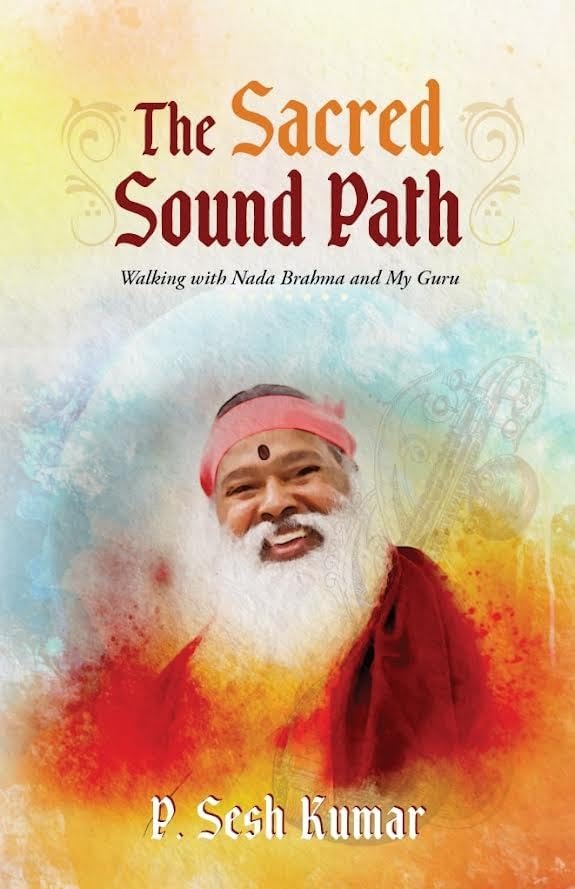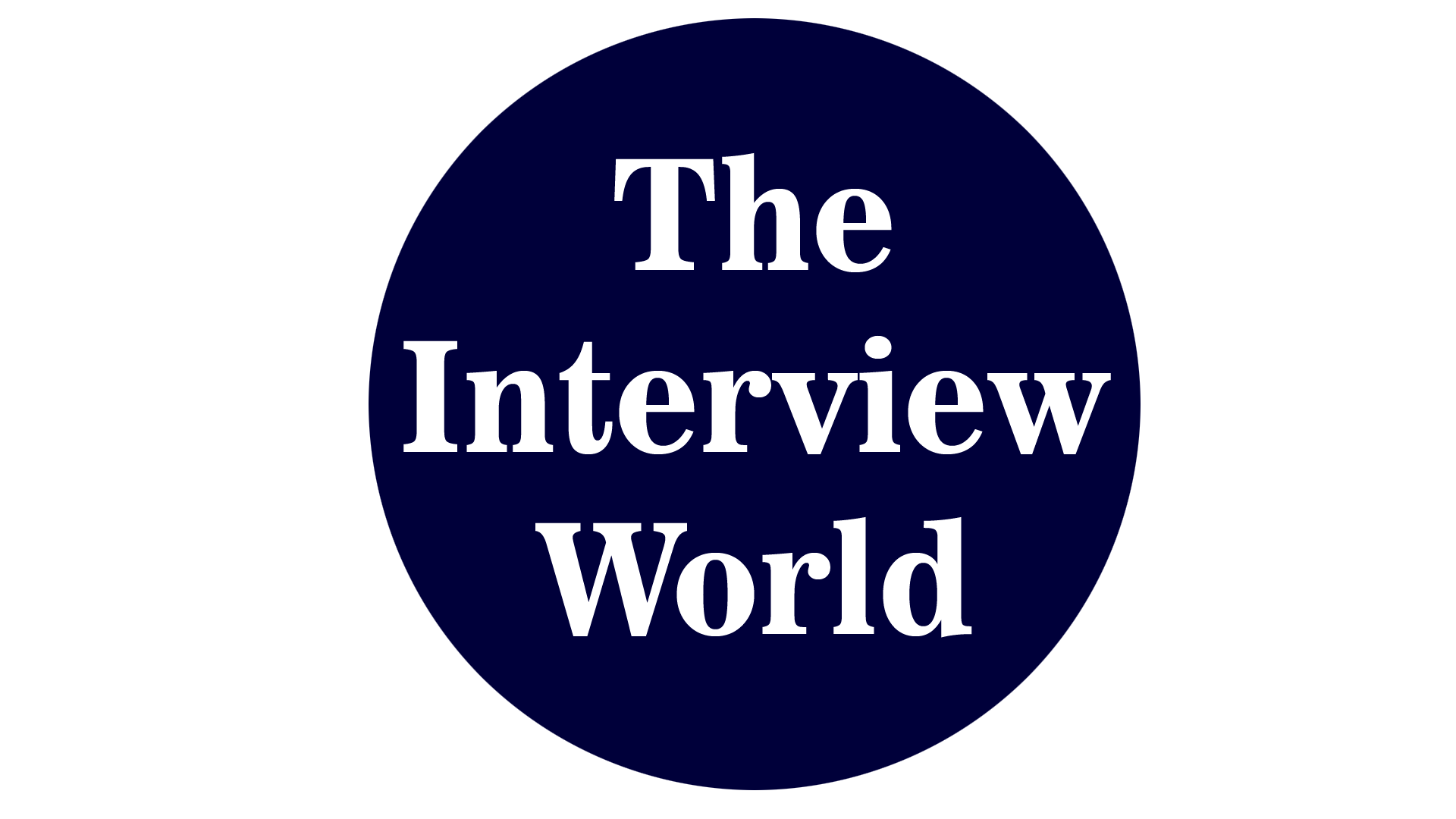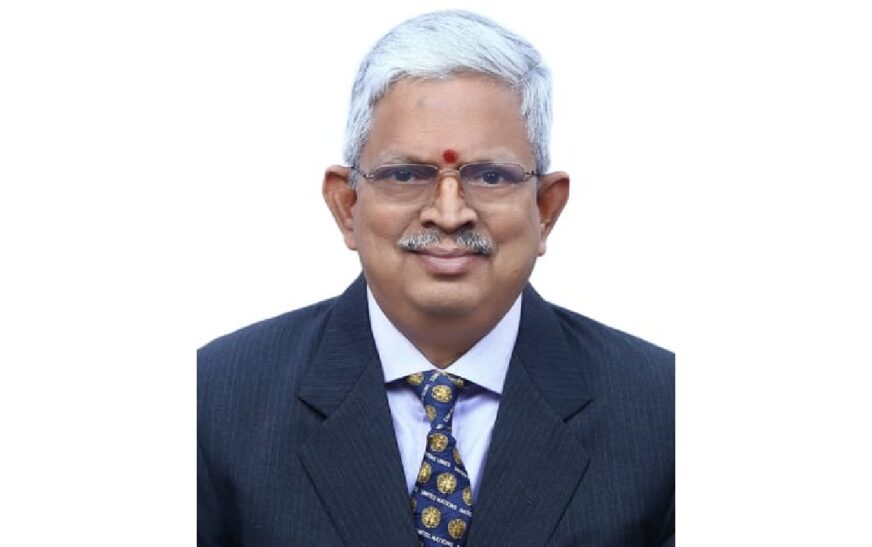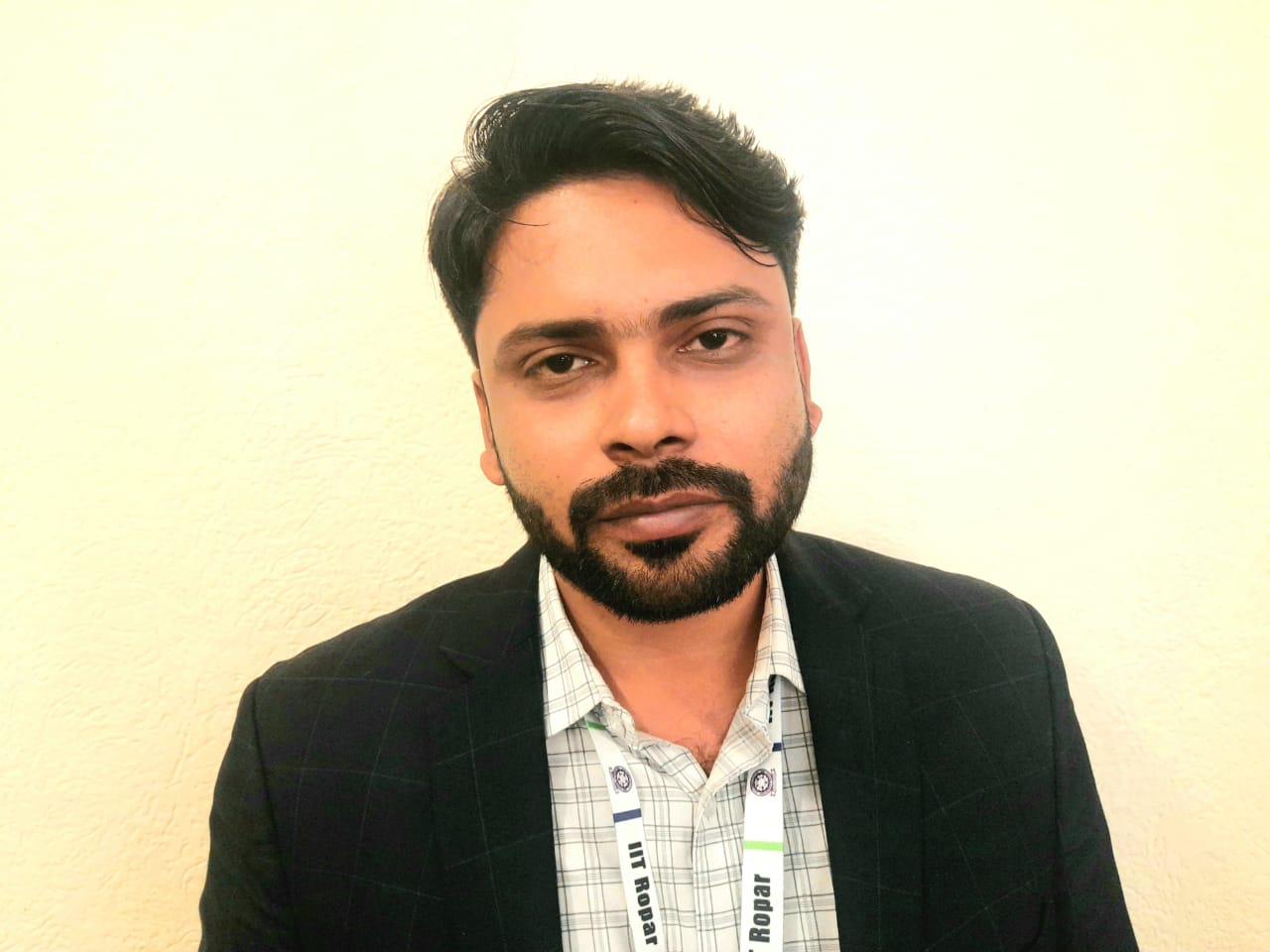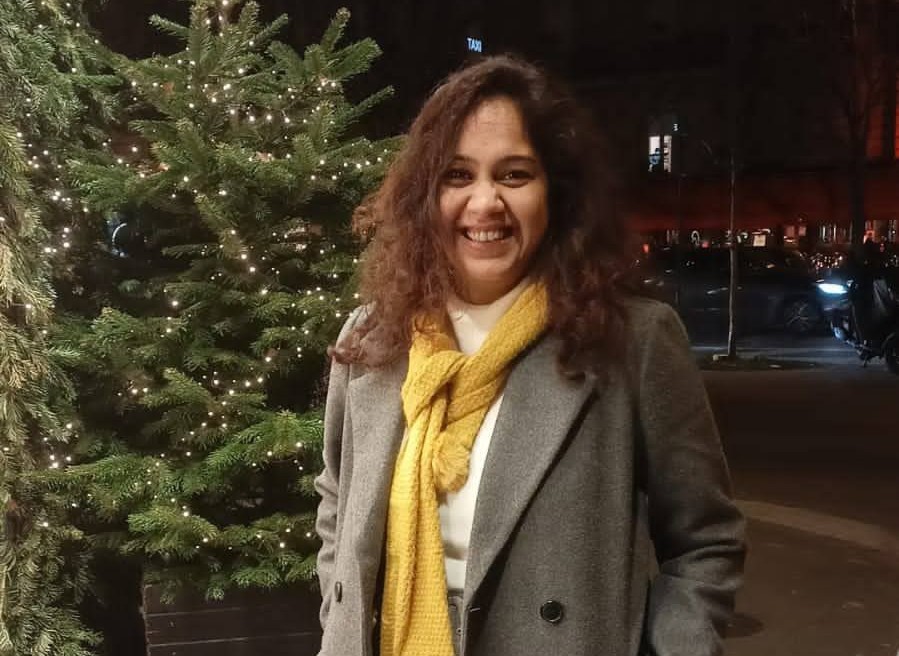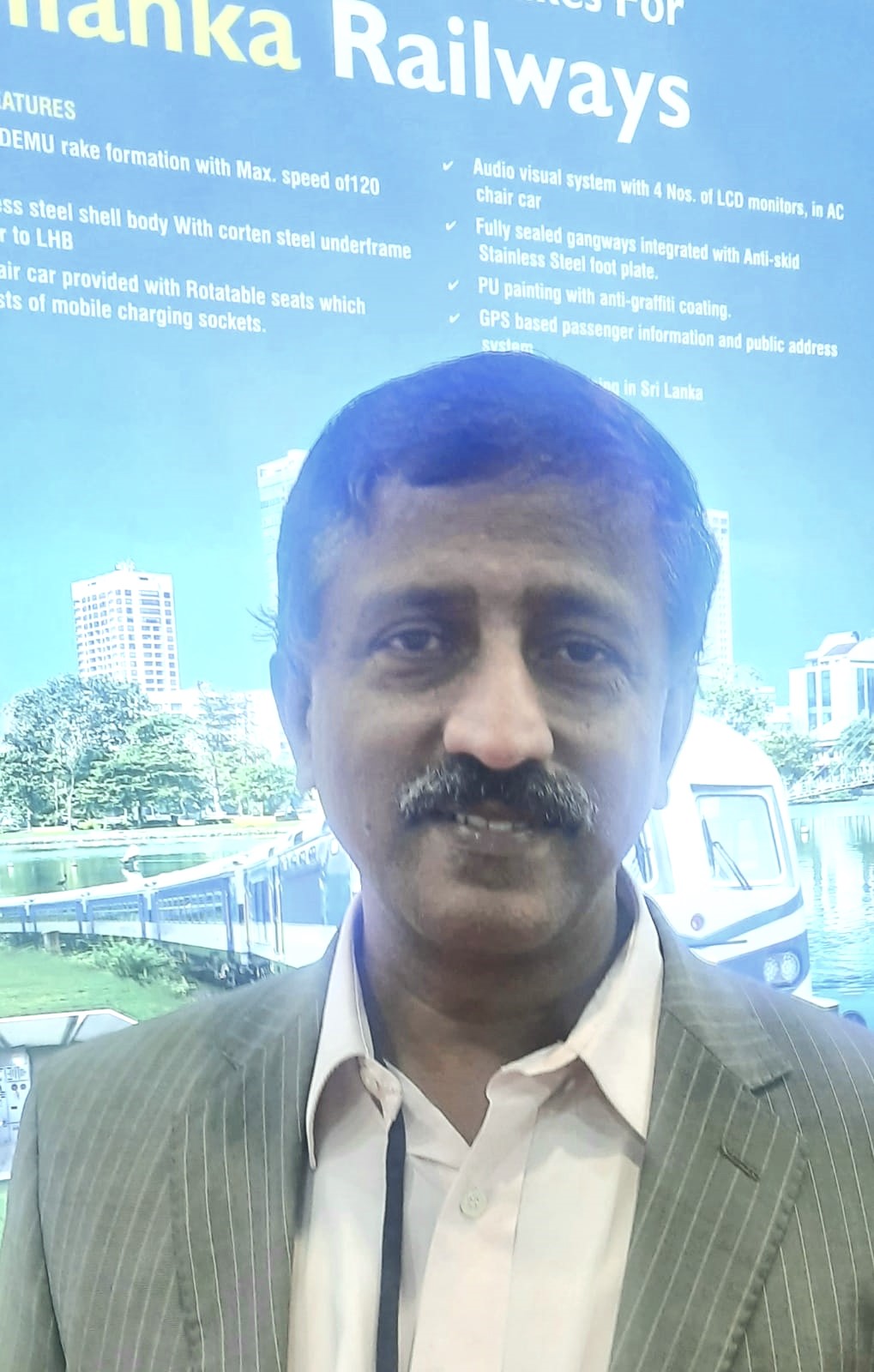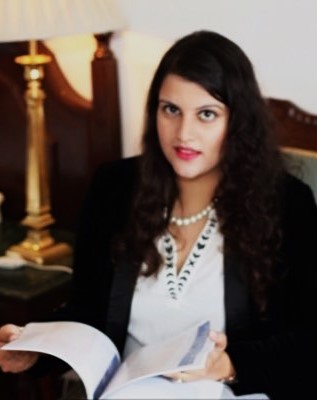The Sacred Sound Path, authored by P. Sesh Kumar and published by The Browser, is a compelling exploration at the intersection of spirituality, science, healthcare, and philosophy. At its core, the book delves into the transformative power of sound healing—the scientific application of specific frequencies to address mental health challenges and psychosomatic disorders. Kumar, once a bureaucrat grounded in logic and evidence-based thinking, evolves into a seeker of higher truths. His personal transformation serves as the backdrop for a powerful journey into the mystical world of Sri Ganapathy Sachchidananda Swamiji—a saint who constructs temples with mathematical precision, heals hearts through music, and uplifts lives with his mere presence.
Blending memoir, history, philosophy, and spirituality, Kumar crafts a narrative that is both intimate and expansive. He invites readers to discover the science and spirit behind Nada Chikitsa (sound therapy), revealing how it aligns with insights from modern neuroscience. He also explores Raga Ragini Vidya, the ancient system that harnesses the emotional power of musical ragas to alleviate suffering and restore balance. Throughout the book, he shares stories of divine orchestration—such as the construction of the 85-foot Hanuman statue in Trinidad, mass recitations of the Bhagavad Gita in Kurukshetra, and the creation of the sacred Nada Mandapa—each a testament to the Swamiji’s vision and grace.
Drawing from ancient Upanishadic wisdom and cutting-edge neurological studies, Kumar presents a unique synthesis that speaks to both the rational mind and the spiritual heart. Nāda Brahma, as he describes it, is not merely a book. It is a vibration, a vision, a voice from the cosmos that urges the reader to pause, listen, and awaken to the music within.
In an exclusive conversation with The Interview World, Kumar sheds light on what inspired him to write the book. He discusses how his background in critical thinking shaped his approach to exploring mystical experiences. Kumar elaborates on how the book acts as a bridge between ancient spiritual practices and the sensibilities of today’s reader, and how it contributes meaningfully to the broader discourse on sound-based healing. Most importantly, he shares the timeless message he hopes every reader takes away: that healing, transformation, and higher consciousness are all within reach—through the sacred sound path.
Q: Your previous work focused on governmental accountability. What inspired your transition to writing about spirituality and sacred sound?
A: For over thirty years, I served in government auditing with relentless precision, deep-rooted accountability, and a steadfast commitment to facts. That pursuit of integrity culminated in two books on governance and financial oversight: CAG – Ensuring Accountability Amidst Controversies: An Inside View and CAG – What It Ought to Be Auditing?
Yet beneath that rigorous professional journey, another path quietly unfolded—one of inner exploration and spiritual awakening. Over time, I found myself drawn to the profound presence and teachings of Sri Ganapathy Sachchidananda Swamiji. What began as mere curiosity deepened into a compelling spiritual call, sparked by firsthand experiences of healing and inner calm through Swamiji’s transformative music.
This shift didn’t happen overnight. It emerged gradually, nurtured by the same discipline and inquiry that shaped my public service career. My analytical training provided the bedrock to approach this new path with sincerity and clarity. As I delved deeper, I discovered a powerful truth: while public accountability upholds societal order, spiritual growth demands a different kind of responsibility—one rooted in self-awareness and the soul’s evolution.
From this confluence of logic and devotion, The Sacred Sound Path was born. It is more than a chronicle—it is a bridge between the rational and the reverent. It captures a journey that began with evidence and reason, but ultimately led into the transformative power of vibration, devotion, and transcendental sound.
I felt an undeniable urge to document this evolution—not solely for personal reflection, but to offer a guide for others navigating the delicate balance between intellectual rigor and spiritual resonance.
Q: How did your background in logic and evidence-based thinking shape your exploration of mystical experiences in the book?
A: My training as an auditor ingrained in me a deep and lasting respect for clarity, consistency, and verifiability. Naturally, when I first encountered mystical experiences—whether through the stillness of meditation, the resonance of sacred music, or the phenomenon of spontaneous healing—I did not accept them at face value. I questioned. I observed. I reflected.
Was it mere suggestion? Coincidence? Could there be psychological or neurobiological underpinnings? Driven by these questions, I turned to the works of neuroscientists like Daniel Levitin and researchers of spiritual science who examined the effects of music and sound on the human brain and body. Their insights offered a scientific framework—one that helped me begin reconciling the seemingly unexplainable with the empirically observable.
In The Sacred Sound Path, I made a deliberate choice: not to mythologize the mystical, but to document it with the rigor of a critical observer. What emerged was a narrative shaped not by blind belief but by gradual transformation—by firsthand experiences that challenged my assumptions and deepened my understanding.
This dynamic tension between logic and wonder did not diminish the journey; instead, it became its creative force. Rather than treating reason and reverence as opposing forces, I allowed them to coexist—each informing and enriching the other. In doing so, I invite the reader, especially the sceptic, to walk beside me—not as a follower, but as a fellow inquirer.
Ultimately, it is this bridge—between analytical inquiry and experiential insight—that defines the spirit of the book. I believe it is this dual perspective that makes the journey both credible and transformative.
Q: How does The Sacred Sound Path aim to bridge the gap between ancient spiritual practices and the modern reader?
A: Modern readers live amidst speed, skepticism, and constant sensory bombardment. In stark contrast, ancient spiritual traditions are rooted in patience, silence, and deep inner resonance. Bridging these seemingly divergent worlds posed both a challenge and a profound opportunity. I sought not to present them as opposites, but as complementary forces—each enriching the other.
The Sacred Sound Path weaves these threads through the lens of my own journey. I began as a staunch rationalist, grounded in logic and empirical thinking. Yet over time, I opened myself to the transformative power of sacred sound—without ever abandoning my analytical mind. This duality became the narrative’s foundation.
Drawing from classical Indian traditions like Nāda Yoga and Rāga Rāgini Vidyā, I reframe these ancient teachings in modern, accessible language. I connect them to contemporary disciplines—neuroscience, emotional healing, and shared human experience. Alongside these insights, I include vivid real-life vignettes, personal reflections, and accounts from across the world, where Swamiji’s music has touched lives and sparked inner transformation.
My aim is clear: to demystify the sacred without diminishing its sanctity. By grounding spiritual principles in everyday language and lived experience, I invite readers not just to understand the Sacred Sound Path, but to feel it—viscerally, personally, and profoundly.
This is not a book to be merely read. It is an invitation—to listen, to resonate, and to walk the path yourself.
Q: How do you envision the book contributing to the broader discourse on spirituality and healing through sound?
A: The world stands at the cusp of a quiet renaissance in sound healing. From brainwave entrainment and music therapy to ancient chants and vibrational medicine, sound is steadily reclaiming its place as a powerful tool for transformation. Yet, much of today’s discourse remains fragmented—either overly clinical or shrouded in spiritual abstraction. What’s missing is a bridge, a coherent voice that connects science, experience, and tradition.
The Sacred Sound Path seeks to offer that unifying voice. It explores the power of sound not only through its physiological impact but as a portal to deeper states of consciousness. Through the lens of my personal journey with Sri Ganapathy Sachchidananda Swamiji’s music and teachings, the book bears witness to sound’s potential far beyond entertainment or therapeutic intervention. Sound, in this context, becomes a sacred force—a medium of communion with the divine.
This is not mere philosophy. It is lived experience. The Sacred Sound Path contributes to an emerging understanding: healing is not solely biochemical—it is vibrational. It transcends the emotional and touches the spiritual. By anchoring this realization in real-world narratives and grounded inquiry, The Sacred Sound Path invites readers to reconsider how they engage with sound, silence, and self.
At its core, the book aims to carve space for indigenous healing traditions like Nāda Chikitsā to be recognized, respected, and reintegrated into the global dialogue on holistic well-being. It is both a tribute to these ancient practices and a trail-marker for future exploration.
Ultimately, The Sacred Sound Path calls on seekers, sceptics, and scholars alike—to pause, to listen, and to hear the sacred in sound once more.
Q: What message or insight do you hope readers take away from your book?
A: At its core, The Sacred Sound Path offers an invitation—to reconnect with the sacredness that quietly resides within each of us, often buried beneath the noise of modern life. Sometimes, all it takes is a single vibration, a resonant chant, or even a silent note to awaken that dormant spark.
The message is clear and deeply human: healing and transformation are within reach. They are not the exclusive domain of monks, mystics, or spiritual elites. Whether you’re a questioning professional, a weary seeker, or someone navigating the tension between science and spirit—there is a path forward. And often, that path begins in sound.
I want readers to leave with a profound realization: faith and reason are not adversaries. Spiritual experiences can be deeply grounded without being stripped of their mystery. The divine can be both heard and felt—simultaneously transcendent and intimate.
More than anything, I hope this book becomes a turning point. A shift—from chaos to clarity, from distraction to depth, from outer striving to inner alignment. If even one reader finds solace, strength, or a flicker of spiritual insight through these pages, then this work will have served its purpose.
This book isn’t about me. It’s about all of us—our shared longing for resonance over restlessness, meaning over noise, and a return to the stillness we’ve forgotten how to hear.
